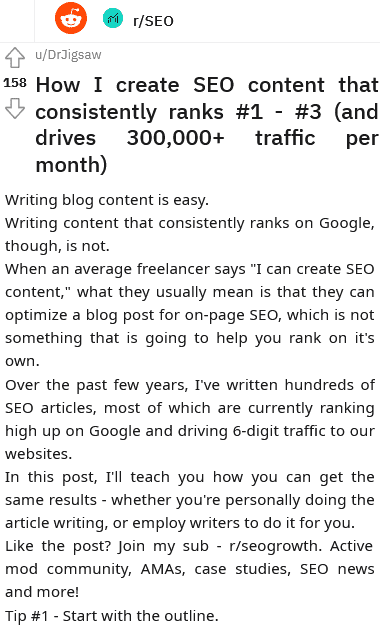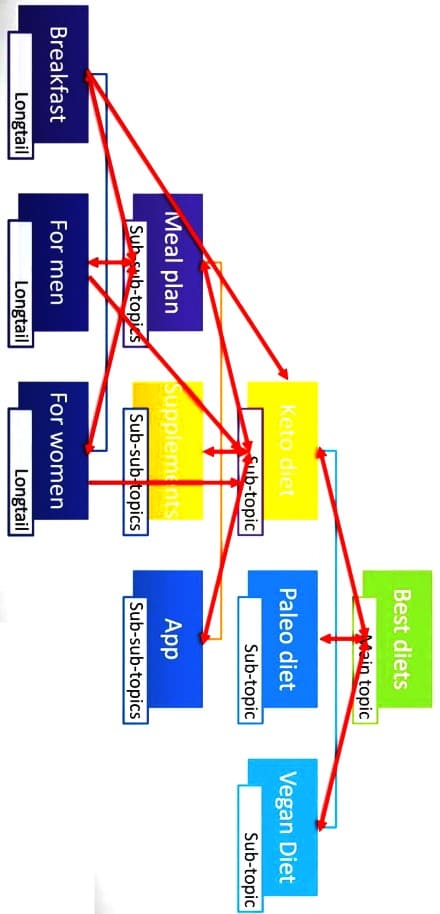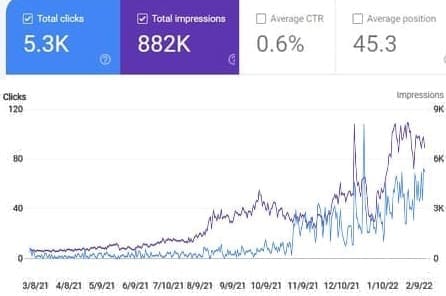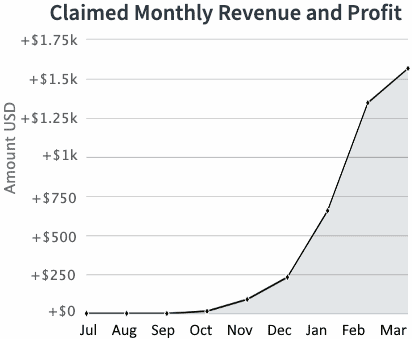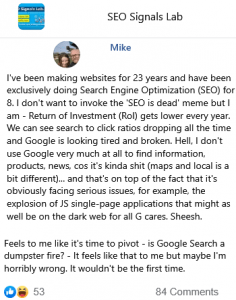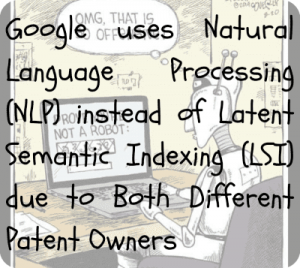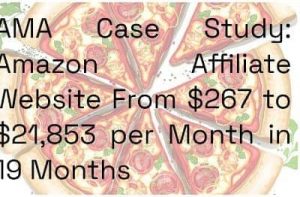How I create SEO content that consistently ranks #1 – #3 (and drives 300,000+ traffic per month)
Writing blog content is easy.
Writing content that consistently ranks on Google, though, is not.
When an average freelancer says "I can create SEO content," what they usually mean is that they can optimize a blog post for on-page SEO, which is not something that is going to help you rank on it's own.
Over the past few years, I've written hundreds of SEO articles, most of which are currently ranking high up on Google and driving 6-digit traffic to our websites.
In this post, I'll teach you how you can get the same results – whether you're personally doing the article writing, or employ writers to do it for you.
Like the post? Join my sub – r/seogrowth Active mod community, AMAs, case studies, SEO news and more!
Tip #1 – Start with the outline.
📰👈
Before you start writing the article (or assigning a writer to a keyword), create a content outline.
A content outline (aka content brief) is a detailed Doc that outlines what any given article should be about.
It helps keep the writer on track with what they have to write/do in order for the article they're writing to rank. Even if you're the one doing the writing, an outline helps keep you on track / get the creative juices flowing (since you don't have to worry about structure)
A good content outline should have the following information on it:
• Target keyword – primary keyword you want to rank for. This keyword should be around 0.5% of total word count in the article. Google doesn't look at keyword density as much over the past few years, but it's still a good practice.
• Secondary keywords – keywords associated with your main keyword. E.g. if you main keyword is "SEO content," the secondary keyword could be "SEO content tips." It's a good idea to sprinkle these keywords around the article (mention each once or twice tops)
• Target word count – I recommend going for the same word count as your best competitor, or 50% longer. Keep in mind, though, that longer content doesn't mean it's better. If the topic is simple (e.g. how to tie a tie), it's OK for the article to be 300 – 500 words.
• Headers to be used in the article – how should the article be structured? What headers come first? Second?
• Article headline – what should the article title be? You can come up with this yourself (I'll teach you how in a bit), or get the writer to do it.
Tip #2. Create quality SEO content.
Now, as for article-writing itself, here's what you should keep in mind:
• Write for your audience. If your target audience includes law firm partners, your copy should be a bit more formal. If it's 19-something skaters, the copy should be informal and (potentially) jam-packed with pop culture references.
• Keep your reader's knowledge in mind. If you're writing an article targeted at senior accountants, you don't need to teach them what an income statement is – they already know.
• Avoid blocks of text. No one likes blocks of text. See how I formatted this article? Much easier to read than if it was just text, right?
• Use bullets to split up content. Bullets help convey your ideas better and improves article readability.
• Use relevant images and graphics. Everyone likes images as long as they add to the topic. Avoid adding generic "office people smiling" stock photos. Only add photos that are relevant to the topic at hand.
• Use problem-agitate-solve to write introductions. Doing your introduction right is essential for Search Engine Optimization (SEO). If it doesn't catch your reader's attention, they'll drop off and read another article. Here's how you can use problem-agitate-solution (PAS) to write compelling introductions every single time:
• Define the problem. E.g. "Most writers can't create SEO content."
• Agitate it. E.g. "If your content isn't created with SEO in mind, you might be wasting a ton of money"
• Solve it. E.g. "In this article, we're going to teach you how to write compelling SEO content that ranks every time."
• Aim for a 6th-grader readability level. No one wants to read an academic research paper in their free time. Make your content simple and easy to understand. You can use Hemingway app to help you with this.
Tip #3. Create a compelling headline.
Compare these 2 headlines:
• What's the best Virtual Private Network (VPN)
• 11 Best VPN Providers in <year> – Expert Reviews
Which one are you likely to click?
Exactly.
Creating a compelling headline is important to help drive clicks to your articles. Otherwise, even if you manage to rank, you won't get too much traffic out of it.
So, to create a compelling headline, combine the following elements:
• Keyword – As a given, the keyword itself has to go in the title. Otherwise, why would the Googler even click your result?
• Numbers
• Top 51 Tips on How to do X
• 101+ Productivity Tips to Get Things Done
• How to Make a Resume [99+ Real-Life Examples]
• Results – The result of the keyword. What's going to happen if they carry out the action correctly? For example:
• How to Write a Cover Letter [to Land the Job]
• How to Write Good Headlines & 2x Conversions
• Year – For some specific topics, timeliness matters. So, you can include the year in the headline. For example:
• 39+ SEO Techniques [Updated for <year>]
• 21+ Business Process Management Tools for <year>.
Tip #4. Interlink your (related) articles
Make sure that all the articles published on your blog on any given topic are linked to each other.
Interlinking helps you SEO in several ways:
• It helps your readers discover other relevant content
• The above, in turn, leads to better average page stay time and website stay time
• Google understands how different pages are related to each other
All of these can help improve your rankings site-wide.
And here's how you can do internal linking right:
• Ask your writers to include 5-10 links to already published blog posts
• When publishing new content, go through your older posts and include links to the one you just published
• When linking to your other content, use the keyword you want it to rank for. E.g. if you're linking to an article about "how to ace the interview," the anchor should be a synonym of the keyword. E.g. "how to pass the interview," "interview tips," etc.
Tip #5. Make sure your SEO is on-point (not just your content).
Content alone won't get you rankings if your website SEO is not on point. Here's what else you need to consider to help push your content to rank better.
• Content volume. How much content do you have published on any given topic? Google considers your authority in mind. If you have 100 articles on accounting, you'd rank better than if you had just 10.
• Backlink profile. How many backlinks do your posts have? If your competitors have 1,000 backlinks, you won't rank if you only have 10.
• Technical SEO. Crawl depth, website speed, mobile friendliness, all that good stuff.
• Internal linking. As mentioned before, internal links are important for your content to rank.
Bonus: Let me review your SEO content!
Not sure if you're writing SEO content right? Drop me a link to an article you (or your writer) created and I'll give you feedback on how you can improve!
Like the post? Join my sub – r/seogrowth Active mod community, AMAs, case studies, SEO news and more!
62 💬🗨
Good write up..can u write something about keyword density and proximity..Am bit confused ,
Thanks
Chandra Bose
Google doesn't care as much about keyword density as it used to. Here's how I usually approach this:
• Include keyword in article title
• Include keyword in one of the H2s
• Include keyword in the introduction of the article
• Aim for a keyword density of 0.5%. While Google did say they don't care about this anymore, it's still a best practice
• Sprinkle Latent Semantic Indexing (LSI) keywords throughout the post
• Once your page starts getting some rankings, check what keywords it's ranking for on Search Console. Then, sprinkle these keywords throughout the article
bbax
Decent stuff, just a few things for newbs:
On-page SEO, which is not something that is going to help you rank on it's own.
That's just not true at all. On page is more important than anything else listed in your post and just by having it nailed you can rank well for a lot of stuff.
Backlink profile. How many backlinks do your posts have? If your competitors have 1,000 backlinks, you won't rank if you only have 10.
If you mean 1000 to a single post, it probably already has an algo penalty lol. And actually strong 10 links will dominate 1000 average ones. Understand your idea with this but you told it in a way too general way and make newbs believe that they need a bunch of links to rank.
My bad – think I phrased this a bit off. What I meant by "on-page can't help you rank on it's own," I meant the optimization you do via Yoast or RankMath. A lot of newbies seem to think that "on-page SEO" is simply following the checklist provided by Yoast, which, of course, rarely actually helps.
That said, if you get the search intent right, write the right real well, do on-page right, etc. then yes, you rank with just on-page (and no link-building).
If you mean 1000 to a single post, it probably already has an algo penalty lol. And actually strong 10 links will dominate 1000 average ones. Understand your idea with this but you told it in a way too general way and make newbs believe that they need a bunch of links to rank.
Used those numbers just as an example, what I meant was, if your competitor has 1,000 quality links, and you only have 10, you won't rank. Given, yeah, only the most competitive websites tend to have 1k+ quality links.
BoringBlackberry
Spot on bbax, it was hard for me to keep reading after I read that on page SEO is not something that would help you rank on its own
FollowMe
5-10 interlinks is is usually overkill. I'd rather have one or two highly relevant interlinks than set an interlink goal.
Also, totally ignore content length. Answer the user's query as concisely as possible. There is no data suggesting that more words = better rankings. This misconception comes from a misunderstand of correlation vs. causation.
If you have a website with a ton of content, you end up with a LOT more interlinks than just 5-10.
Obviously, you want the internal links to be relevant to the topic
Re: content length, yeah, word count is NOT a ranking metric. That said, more often than not, long-form > short-form.
ecommerceoptimizer
Pretty good post. A lot of good info here. ASs someone who has been creating web content for 20 + years, you get it and understand what to do and how to do it.
I don't agree with the backlink comment. John Meuller (again last week) and Matt Cutts have both come out and set the record straight. All anyone has to do is a sample of search tests and examine the profiles of the results. They will find sites with weak profiles beating out better profiles all of the time. Plus a Google search of rank without backlinks returns articles from Moz, Neal Patel, Search Engine Journal, and links to Meuller and Cutts comments.
Backlinks help a lot but they are not the game-changer they once were. Ranking without a strong profile is not difficult and your SEO becomes stronger in the process.
Page schema is very important currently and is a great way to help your search results through better-displayed results and search understanding. Proper schema means Google understands your content before it reads the html. We use schema specifically to rank Ecommerce collection pages as hyper-targeted landing pages.
Keyword research is key, however, once established we do not focus on it. Instead, we focus on topical relevance and entities. Topical relevance is key to ensuring that Google understands relevance very clearly. Using topical relevance correctly relieves some of the pressure from the keyword focus. I write a lot of content briefs and they are not very different than what you do, but I never mention keywords instead giving them a list of the topically relevant phrases which already fit the outline I've written.
SEO Case Study for Affiliate or AdSense Pub: How I Increase Organic Traffic by 900% in 6 Months
SaaS SEO Case study: 1 Mil to 6.4 Million Monthly Organic Traffic
Two Steps Only Have Increased My Blog Traffic by 3x a Month: Pillar Content and Influencer Outreach on LinkedIn, Quora, and Twitter Through the Social Share!
SEO Is Easy! The Exact Process We Use to Scale Our Client own SEO From 0 to 200K Monthly Traffic and Beyond
An SEO Case Study Improved 30 Percents of Prev Traffic in 3 Months on an eCommerce Website
102 Best SEO Tips to Help You Drive Traffic This Year: Do Keyword Research, Hire Writers
$4000 Amazon plus Ezoic Affiliate Commission a Month With An Outdoors Niche Site
19 Ultra Beginner Tips to Grow Website Traffic
